Average Farmgate Prices of Ampalaya (Bitter Gourd), Fresh
The average farmgate prices of ampalaya, fresh in January to December 2020 were mostly higher compared to its record in January to December 2019. The highest price increment was reported in January. Its price was Ᵽ53.13 per kilogram in 2019 and it increased to Ᵽ65.26 per kilogram in 2020. On the contrary, the month of September recorded the highest price decrement of 4.55 percent. (See figure 1.)
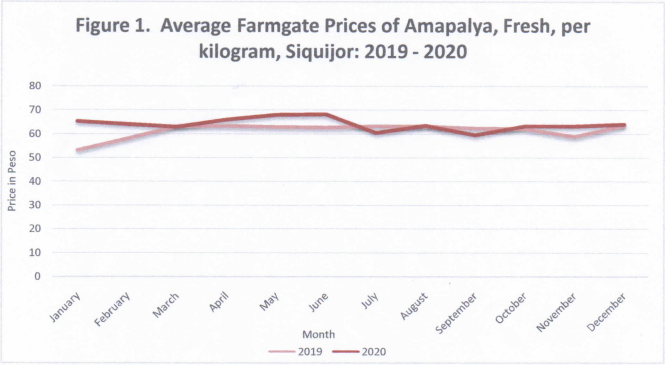
Average Farmgate Prices of Cassava, Fresh, For Consumption
Cassava, fresh, for consumption farmgate prices were higher in January to December 2020 compared to January to December 2019. The highest price increment was reported in February due to less production. Its price was Ᵽ4.79 per kilogram in 2019 and it increased to Ᵽ8.00 per kilogram in 2020. (See figure 2.)
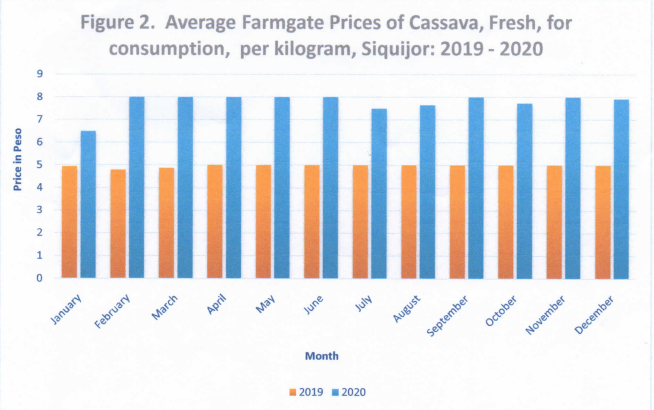
Average Farmgate Prices of Banana, Latundan, Green
Almost all of the average farmgate prices of banana, latundan, green increased in the year 2020 compared to year 2019 except for the month of September. In September, the price decreased from Ᵽ24.00 to Ᵽ22.88. The rest of the months of 2020 recorded a significant increased with the highest increment in the month of June from Ᵽ21.73 to Ᵽ25.66 and a price difference of Ᵽ3.93. (See figure 3.)
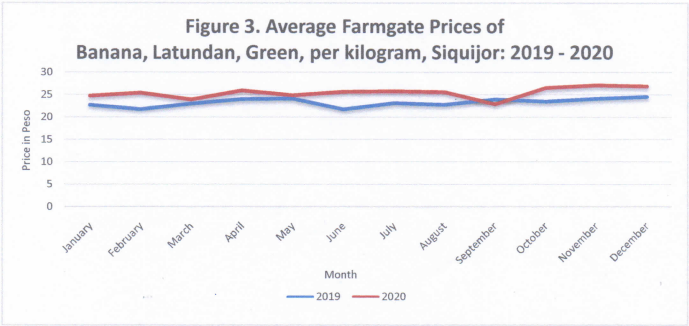
Average Farmgate Prices of Banana, Saba, Green
The average farmgate prices of banana, green, saba were higher in 2020 compared to its prices in 2019. The highest price increment was reported in April with a percent increase of 53.03 percent or from Ᵽ11.28 per kilogram in 2019 to Ᵽ17.60 per kilogram in 2020. (See figure 4.)
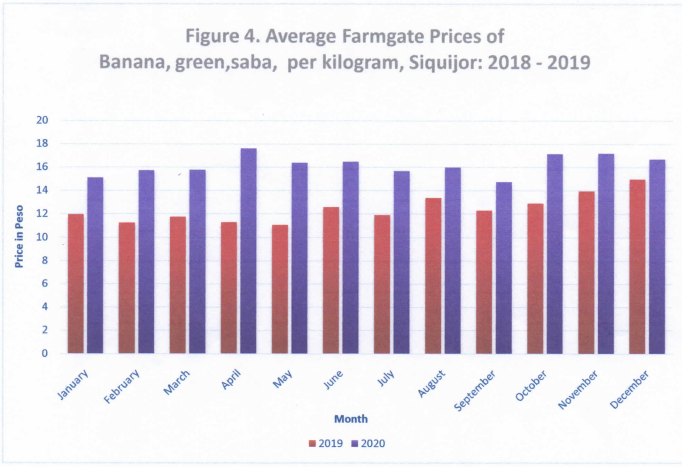
Average Farmgate Prices of Copra, Corriente
The average farmgate prices of copra, corriente were higher in 2020 in contrast to 2019. December recorded the highest price increase as its price moved from Ᵽ13.14 to Ᵽ28.63 with a price difference of Ᵽ15.49 or a percent change of 117.88 percent. (See figure 5.)
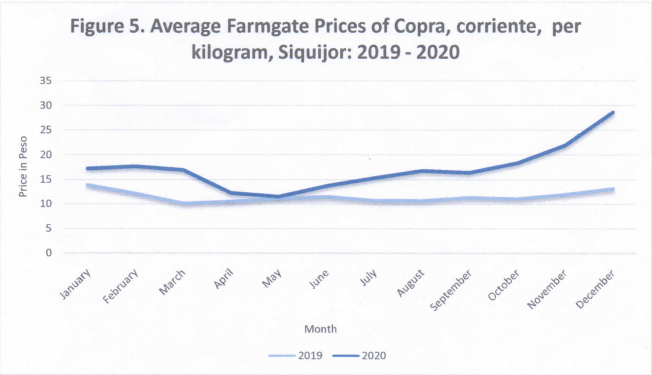
Average Farmgate Prices of Stringbeans, long
The average farmgate prices of stringbeans, long were mostly higher in 2020 unlike in 2019. December recorded the highest price increase as its price moved from Ᵽ50.45 in 2019 to Ᵽ57.82 in 2020. On the other hand, the month of May reported the highest price decrease from Ᵽ57.63 in 2019 to Ᵽ46.79 in 2020. (See figure 5.)
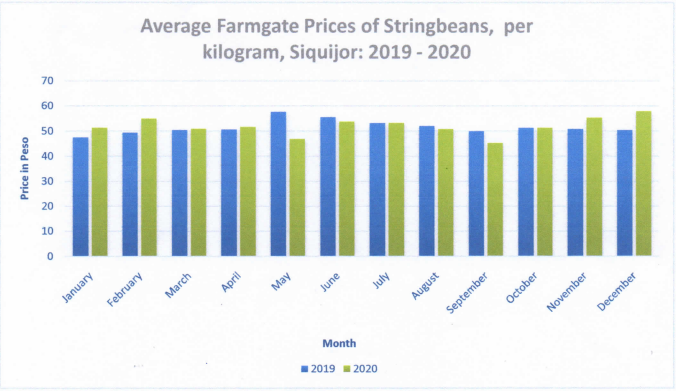
TECHNICAL NOTES
Prices received by farmers for crops, livestock and poultry are the farmers’ selling prices for their produce at the first point of sale. These prices depend on the place of sale which may be within the production site, at the wholesale market or other areas. At each point of sale, every respondent will be asked the volume sold and freight cost in marketing their product. If a farmer marketed several times during the reference period, the latest quantity sold and prices obtained are reported. Commodities monitored by province are pre-determined based on four (4) criteria, namely:
1. major produce of the province in terms of volume of production
2. priority crop of the province
3. national commodity and the province is one of the major producers
4. Producers’ Price Index (PPI) commodity Determination of the agricultural commodities to be monitored for farm prices shall be done at the Provincial Statistical Office (PSO).
RATIONALE
The availability of marketing information in farm prices is important not only in the formulation of economic programs and policies, but also in the agricultural commodity production process. This is particularly beneficial to farmers at the stage of production planning and decision-making in terms of profit maximization.
OBJECTIVES
The general purpose of the Farm Prices Survey (FPS) is to gather reliable price information at the farm level. The specific objectives are:
1) to generate estimates on farmgate prices of major agricultural commodities;
2) to develop sets of price indices and to measure the purchasing power of growers of selected agricultural products;
3) to analyze the seasonal trends and variations in agricultural prices;
4) to serve as input for forecasting future supply, demand and prices of agricultural commodities;
5) to assist policy makers in the formulation, implementation and administration of economic programs; and
6) to guide farmers/raisers in their decision making relative to their agricultural activities geared towards improvement of their profitability.
FREQUENCY OF DATA COLLECTION
Collection of data is done monthly, during the last 10 days of the month. The reference period is days 1 to 30 of the reporting month.
Farmgate prices of some commodities in the province were not monitored due to on and off trading.
(SGD.) AURELIA M. CANDA
Chief Statistical Specialist

